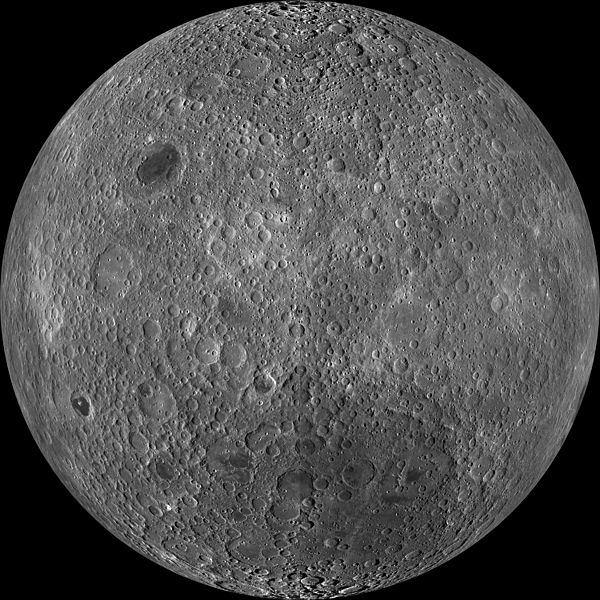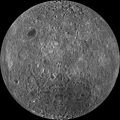Файл:Moon Farside LRO.jpg
Внешний вид

Къаддæргонды ас: 600 × 600 пикселы Другие разрешения: 240 × 240 пикселы | 480 × 480 пикселы | 768 × 768 пикселы | 1024 × 1024 пикселы | 2048 × 2048 пикселы | 18 000 × 18 000 пикселы.
Оригиналы файл (18 000 × 18 000 пикселы, файлы уæз: 85,34 МБ, MIME тип: image/jpeg)
Файлы истори
Ныххæц датæ/рæстæг-ыл, цæмæй фенай еуæд куыд фæзындис.
| Датæ/рæстæг | Къаддæргонд | Барæнтæ | Архайæг | Фиппаинаг | |
|---|---|---|---|---|---|
| нырыккон | 23:47, 19 мартъийы 2014 |  | 18 000 × 18 000 (85,34 МБ) | Huntster | High resolution mosaic. |
| 04:12, 9 апрелы 2011 |  | 1600 × 1600 (1,44 МБ) | Bubba73 | {{Information |Description ={{en|1=Far side of the Moon, by NASA's Lunar Recon. Orbiter}} |Source =http://apod.nasa.gov/apod/image/1104/farside_lro1600.jpg |Author =NASA - LRO |Date =2011? |Permission = |other_versions = } |
Файлæй архайд
Ацы файлæй иу фарс дæр пайда нæ кæны.
Ацы файлæй куыд пайда кæнынц
Данный файл используется в следующих вики:
- Использование в af.wikipedia.org
- Использование в az.wikipedia.org
- Использование в be.wikipedia.org
- Использование в bjn.wikipedia.org
- Использование в bn.wikipedia.org
- Использование в bs.wikipedia.org
- Использование в ca.wikipedia.org
- Использование в cs.wikipedia.org
- Использование в de.wikipedia.org
- Использование в en.wikipedia.org
- Использование в en.wikibooks.org
- Использование в en.wikiversity.org
- Solar System, technical/Moon
- User:Marshallsumter/Radiation astronomy2/Visuals
- Draft:Original research/Planets
- User:Marshallsumter/Radiation astronomy2/Visuals/Quiz
- User:Marshallsumter/Rocks/Rocky objects/Astronomy
- User:Marshallsumter/Radiation astronomy/Courses/Principles/Hourly 2
- User:Marshallsumter/Radiation astronomy/Courses/Principles/Midterm quiz
- User:Marshallsumter/Radiation astronomy/Courses/Principles/Final quiz
- Titan/Quiz
- User:Marshallsumter/Rocks/Rocky objects
- Draft:Enceladus/Quiz
- Moon/Quiz
- Stars/Sun/Heliology/Quiz
- Earth/Quiz
- Stars/Reds/Quiz
- Draft:Dione/Quiz
- User:Marshallsumter/Radiation astronomy2/Scattered disks/Quiz
- User:Marshallsumter/Radiation astronomy1/Kuiper belts/Quiz
- Liquids/Liquid objects/Moon
- User:Marshallsumter/Radiation astronomy/Craters
- Использование в es.wikipedia.org
Просмотреть глобальное использование этого файла.


